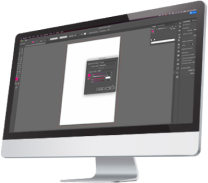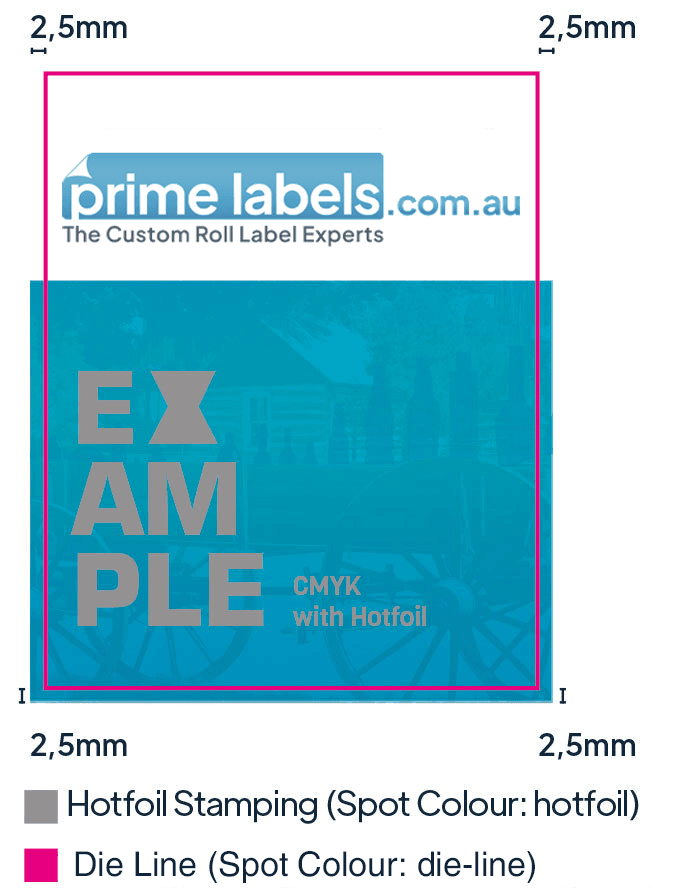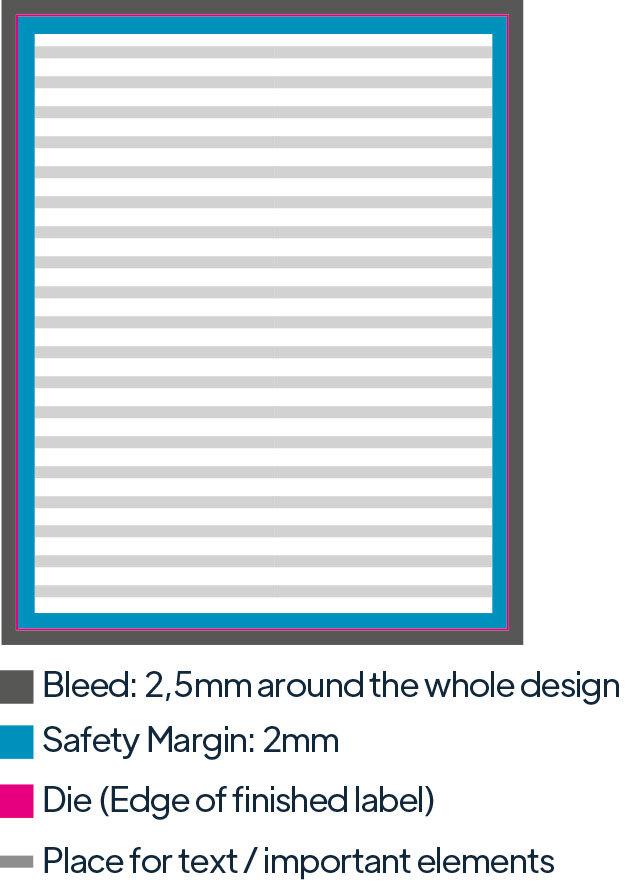Label Design and Artwork Guidelines
To ensure that your order is executed as efficiently as possible, we ask that you use the following information as a guide. You can create professional print files that meet our requirements with graphics programs such as Adobe Illustrator, InDesign or ArtPro.Important information to create your file:
Structure of the label
Depending on the design of your label and the finishings that you require, the structure would be as follows. Note: Please keep in mind that we have included all the layers that may be necessary. The standard elements are marked in blue.
Die cut
Digital Varnish
Hotfoil / Digital Coldfoil
Digital Print (CMYK)
Self-Adhesive Label / Material
Carrying material
Step by step
Video tutorials
Learn how to get your files ready for printing with our easy tutorial videos. They'll show you all the important steps for perfect prints.

Still not sure?
Get in touch
Our customer service is your go-to resource for unparalleled expertise and assistance with all aspects of labels.




We recommend a font size of at least 7 pt and high contrast to the background. Fonts in gray or white as well as fonts that are too small can appear blurry.
Our tip: Try printing out your design at home. In this way you can see whether all fonts and elements are legible.
